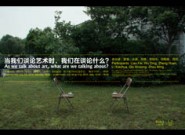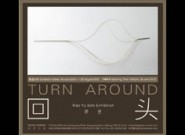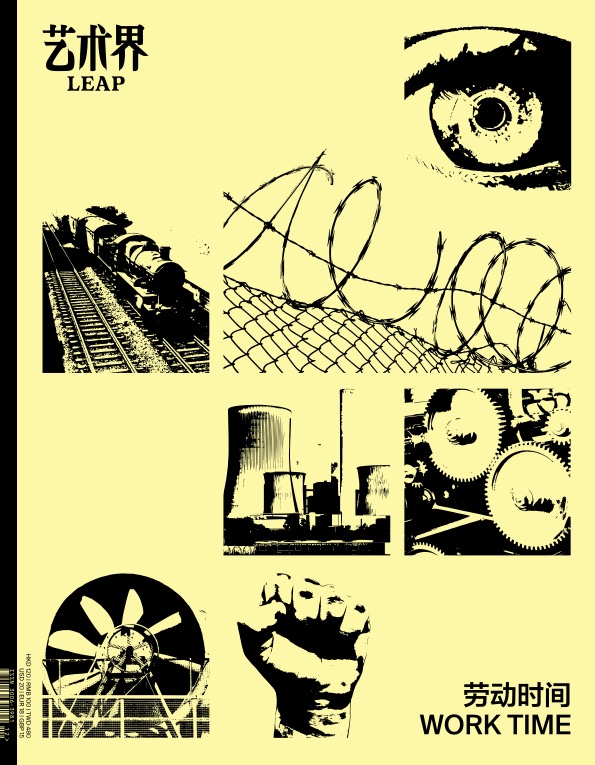Tallur L.N.’s sculptures are depressive fantasies of systems beyond individual control; they depict humanity as commiserating victims of a world too large and too alien to do anything but become overwhelmed by. The artist’s recent outing at Arario Gallery’s Liquor Factory outpost, “Chromatophobia: The Fear of Money,” meaning a persistent fear of money, distills the…
Read MoreThe simplistic power of Ken Kitano’s photography originates from the persistence with which he attempts to renew and re-energize consciousness. From when he began photographing in 1989 until today, the artist has put together three series of works; by playing with an application of photography as basic as the adjustment of shutter speed, he has…
Read MoreThe Eastern Jin painter Gu Jun’s portrayal of a high-rising edifice entitled with the inscription, “Ascending Without a Ladder, No Point of Worldly Return” is a scene that embodies the pursuit of serenity and peace. Qiu Xiaofei’s new show at Boers-Li Gallery channels this classic, and is aptly named “Point of No Return.” Qiu’s title…
Read MoreIn comparison to the buzzing southern metropolis of Shenzhen where his exhibition is located, Jia Aili’s northeastern hometown of Dandong, a little city on the Sino-North Korean border, has long been referred to as a historical city. Dandong and Shenzhen, at opposite ends of the country, are two cities with completely different fates, fates that…
Read MoreTaipei can be a beast in the day, a city roaring with the exhaust of a thousand scooters, the buzz of a thousand restaurants and street stalls, waves of pedestrians endlessly coming and going. For his solo outing at ShugoArts in Tokyo, artist Jun Yang chooses instead to focus instead on the night, when the…
Read MorePlaying in a dark exhibition hall of about one hundred square meters is Fang Lu’s five-part signature work, for which she began recording in 2001. Her production process involves pre-installing a particular environment, taping a scene, and compiling the final product: a behavioral recording. Fang Lu’s completed work does not correspond to the actual time…
Read MoreIn the China Pavilion of the Shanghai Expo, the image of Qingming Festival—the twelfth-century work of Zhang Zeduan of the Northern Song—is projected onto the wall. By now, this famous painting has played itself out as a popular, massive, dynamic ink creation—throughout the course of Chinese art history, Zhang’s depiction of the Bianjing city marketplace…
Read MoreIf identity and personal memory maintain a certain degree of unity, then Yangjiang Group’s exhibition “The Garden of Pine—Also Fierce Than Tiger II” at Tang Contemporary Art in Beijing traps people in the dislocation between personal identity and historical memory. The first sight upon entering the exhibition hall is a scene cast entirely in paraffin…
Read MoreAs the name suggests, the word “past” in “Learning From the Past and Opening a New Age,” refers to traditional Chinese painting; “new age” refers to the style of modern Chinese painting championed by Huang Qiuyuan, and “learning from” here is more like “relying on.” The last and most important portion of the exhibition title…
Read MoreSome exhibitions lie at once entirely within reason and completely beyond expectation. The National Art Museum’s special exhibitions memorializing the works of Hua Junwu (1915-2010) and Wu Guanzhong (1919-2010), which opened concurrently in July, serve together as a perfect example of this possibility. These two painters both hold important positions in the history of art…
Read MoreThis exhibition is brimming with tension. From it, one can easily detect the frailty of the Chinese contemporary art world, as well as its sense of internal anxiety. Perhaps that’s not at all the impr…
Read MoreThe full range of discussions regarding the merit and worth of “the biennale,” whether concerning spectacle, universal precarity, making worlds, cultural tourism, consumer culture or “the new,” in what is effectively a global competitive market, all surface in this year’s Biennale of Sydney, and not just in its hyperbolic title, “Beauty of Distance: Songs of…
Read MoreAs the Baha’i saying goes, “Love me (so) that I may love thee,” so you must visit an exhibition for yourself before you dare speak of it. So much of what people say of exhibitions whiffs of a mixture …
Read MoreAfter the Duolun Museum of Modern Art opened its doors in 2002, the neighborhood around it became a designated tourist attraction and a melting pot for a wide range of art institutions. In short time,…
Read MoreInitiating discussion on the abstract topic of the mechanisms of creation requires one to be both insouciant and courageous. Of course, neither insouciance nor courage are innate qualities. When artists, musicians, writers and other fellow unemployed get together, when this group of people appeal to the roaming notions and floating emotions of the creative process…
Read MoreIn his solo exhibition “Fit,” the artist Liang Shuo’s role first seems that of a furniture designer. He transformed the entire C5 Art space into a building made up of multiple rooms. In the “living room” Liang “designed” stylish furniture, where visitors may, for example, lie down on a sofa and watch television. However, this…
Read MoreSince the 1990s, the unique characteristics of contemporary Chinese society and art have been the focus of a great number of artists and curators. There seem to have been an equal number of critics who have pointed out that this type of creation and exhibition is exceedingly simple, spiritually one with traditional realism. In the…
Read MoreThe exhibition “Stepfather Has an Idea!” features six paintings completed by Xie Nanxing since 2009, divided into two series that communicate in apparently dissimilar languages. The works in the “Untitled” series are nonfigurative in nature, employing implied and imaginary systems of words and symbols to transmit to the viewer, for example, a sexual re-interpretation and…
Read MoreSkulls have been portrayed in art as early as the Middle Ages, especially in biblically themed work, where they have been used to symbolize death, eternity, the fleeting nature of time, and a number of other metaphors. Damien Hirst’s diamond skull and Takashi Murakami’s cartoon skull have taken this symbol and given it contemporary pop…
Read More















